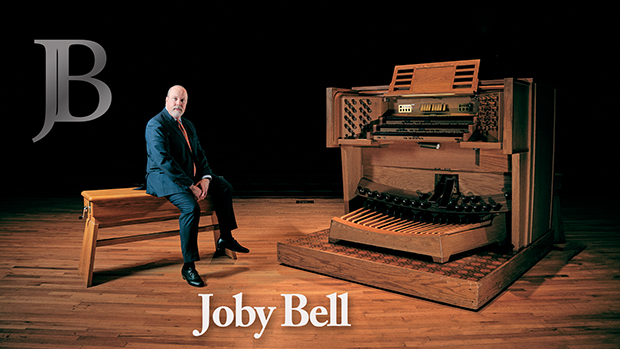Widor vs. Joby: Introduction
 Wednesday, May 20, 2020 at 4:14PM
Wednesday, May 20, 2020 at 4:14PM
My arguments with Charles-Marie Widor have been numerous and intense. He demands much of the fingers and feet, but he always demands so much more of the brain, the ears, and the soul. He always wins the arguments, as should any composer. But I also win because I learn so much.
I recorded all ten of Widor’s solo organ Symphonies, plus his later works Suite Latine, Bach’s Memento, and the Trois Nouvelles Pièces. That makes me a Widor expert, right? Well, it certainly makes me more fortunate than I ever thought I’d be. I never thought I’d be learning my way through all those works, many of which had previously just sat in my growing score collection for many years. I never thought I’d experience this transcendent music rendered even more transcendent on the organs I chose to record them on. So NOW I’m an expert, right? Sure.
For this music, I have already written about the recording sessions and the organs I recorded on. In the present series I’ll be offering the many tiny refinements I made for myself to what’s on Widor’s pages, much as I did with Franck a few years ago. I’ll address my approaches to them all, one opus at a time, until they’re done. Meanwhile, here are some general comments and methods:
----------------------------------
In his Bach edition co-edited with Albert Schweitzer, Widor constantly admonished the organist to make their own decisions, indeed to search out their own path to decisions. Widor was careful to remind that his editorial was truly editorial and not absolute. He also allowed similar freedom in his own music, depending on the organ; not every gadget existed on very organ, and not every note could be played the same way on every organ. And let’s not forget that the organ Widor was used to was an anomalous, whopping five-manual monster, whereas his given registrations are for the more conventional three-manual organ.
In much French Symphonic organ music, coupler indications are not included with the registration directives at the top. Rather, you have to look into the score for coupler hints. “G.P.R.” in the manual staves indicates, “Play on the Great, and couple the other two manuals to it.” “P.R.” means, “Play on the Positif with the Récit coupled to it.” “G” means, “play on the Great with nothing coupled to it.” And so forth. For all movements in all the Widor works, I scribbled coupler indications among the stop registrations. That saves a few seconds when registering on the next organ.
Friend, Manual I/II Transfer is your friend. And in my book, “friend” is anything that helps makes manual changes smoother. “Thumbing” among manuals is a thing, even back to Bach and earlier. In the English or American configuration, where the Great manual is in the middle, it is possible to “thumb” to either of the other manuals. But Widor's Great was on the bottom, and so he was able to thumb from the Positif in either direction, but from the Great only up to the Positif. But not so fast – he couldn’t even do THAT, as it turns out, because he had, for lack of more room to explain it here, TWO Great manuals, which means that his Positif was the THIRD manual up, and his Récit was the FOURTH manual up. So virtually all thumbing I do in Widor is just because I can and not at all because Widor necessarily could.
Therefore, whenever I am compelled by a small, inner voice to make a change to venerable music, such as the slight alterations I'll be sharing in this series, I do so by first considering how the composer might have played a certain passage, given the instrument they played regularly. Once I have done that and have determined that I can make use of a slightly different method or technology on another organ, then I make the change and the notation, exclusively in the interest of clarity of voices or of manual change convenience. (I don't re-compose the piece.) I make a very great number of little changes, none of which should be felonious but all of which add a little more polish to things.
A few additional thoughts:
1) Widor was not exhaustively researched until John R. Near came along. Do yourself a favor and get Near’s two books on Widor's life and thoughts on organ playing, plus Near's editions of the Symphonies (A-R Editions), and the Bach’s Memento (Crescendo Music Publications). You won’t be disappointed; you will be overcome in equal parts by Widor’s genius as well as Near’s exhaustive care in reporting.
2) Recordings of the Symphonies abound and are still being made, and I haven’t found a bad one yet. Pick one. Or four.
3) Widor’s music “translates” differently when recorded vs. performed live. Many live performances offer excerpted movements only, whether to allow more time on a program for other composers or because the performer doesn’t like all movements of an opus. I have gone the excerpt route only twice. Now I’m a believer in all or nothing. I like to perform the Bach’s Memento and Symphonies 3, 5, 6, 8, and Romane in recital. I’ll be working to get No. 7 and Gothique planned on future programs. The others (1, 2, 4) are no less wonderful, but they have a harder time “fitting” into my programming.
4) For what it’s worth, I’m entitled to a least favorite, am I not? Number 4.
5) My favorite? It’s a tie between Romane and Number 8.
 Joby Bell | tagged
Joby Bell | tagged  Note by note,
Note by note,  Widor vs. Joby
Widor vs. Joby 